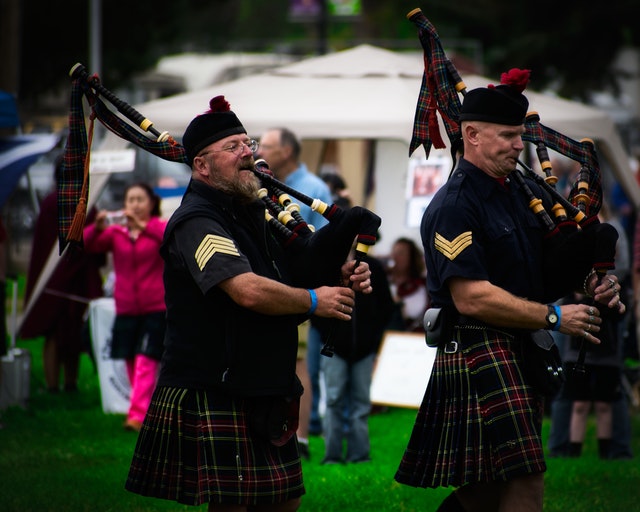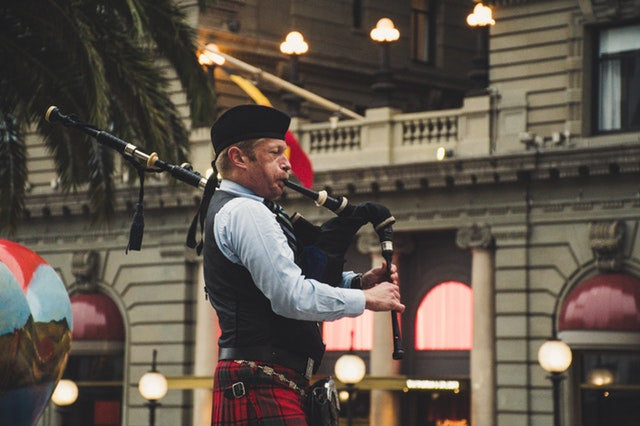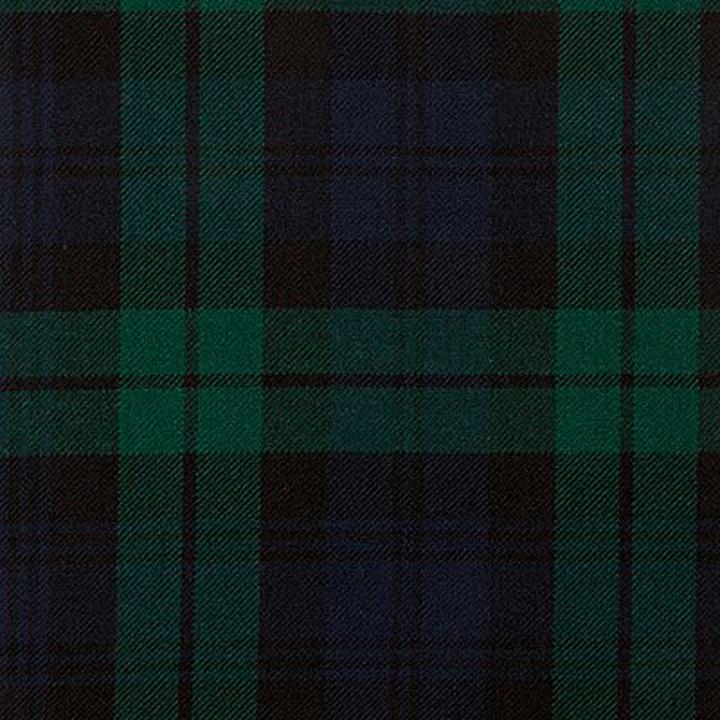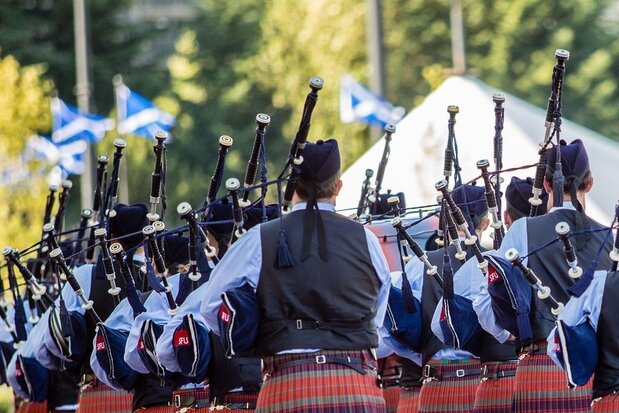There is a lot of curiosity surrounding kilts - the traditional garment used by the Scottish usually with a tartan pattern. Although the origins of the garment can be traced back to the 16th Century, much has evolved in terms of the design, fabrication and tailoring of a kilt. Here is how a kilt is made.
Design and Construction
The Scottish kilt has a unique design, construction and convention which is distinct compared to any other type of garment. It is a tailored piece of garment which is wrapped around the waist. The fasting mechanism of a kilt comprises of straps and buckles that secure the garment on both ends. The inside strap usually passes through a slit near the waistband which is typically buckled on the outer side. In some constructions, this strap also remains tucked in and needs to be buckled inside the waistband.
A kilt usually covers the body from the waist to the knees. The front design comprises of overlapping layers that are called as aprons. It is actually a single piece of fabric which is pleated. A kilt pin holds the front apron on the free corner. Scottish traditions dictate that men are not supposed to be wearing any apparel under a kilt. However, many modern wearers prefer to wear shorts as a caution due to the kilt’s unique construction.
Fabric
A typical kilt is made from twill, which is woven worsted wool. A modern-day kilt for an adult needs about six to eight yards of 26-30 inches or three to four yards of a double width tartan fabric. A double width fabric is woven in such a fashion that the pattern matches on the selvage perfectly. Most kilts are hemless as it increases the weight of the garment and also changes its fitting on the wearer. However, the exact amount of fabric depends on several constraints like the size of the sett or the number of pleats put into the garment and the size of the wearer.
Setts
Setts are one of the most distinctive features of an authentic Scottish kilt. They are symbolic to a particular clan and be traced back to a couple of centuries. While today’s tartans depict districts, counties, societies and corporations, it was not until the Victorian era that the traditional tartans were even recorded and formalized.
Measurements
Although most kilts are ready to wear, bespoke kilts require at least three measurements: waist, hips, and length of the kilt. Although it may seem that kilts are loosely hanging, a properly tailored kilt can be bucked quite securely and comfortably around the wearer’s body. Standardly sized kilts, when bucked appropriately will reach only halfway across the kneecap.
Pleating and stitching
Usually, kilts are pleated in two ways: box or knife pleats. Knife pleats are simple folds, and box pleats are a bit bulky. Knife pleats are quite common in modern civilian kilts although their regimental traditions may be different. It is interesting to know that many tartan wearers choose a variety of accessories like belts, kilt pins and jackets to complete the look.
Finding an authentic kilt is a challenge, especially because this coveted garment has a unique construction, tailoring and tradition attached to it. If you are looking for an authentic kilt, visit us at www.tartantown.com to experience authentic Scottish traditions.









